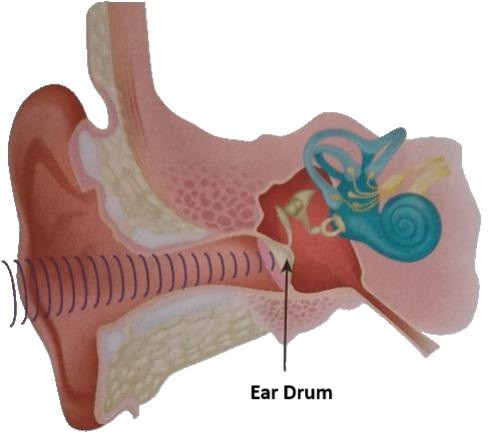Sound Waves and Reflection of Waves
This section explains sound waves and reflection of waves covering, the reflection of waves, the angle of incidence, the angle of reflection, the law of reflection, sound waves and how soundwaves reach your ear.
Reflection of Waves
Reflection is the process where a wave changes direction as it strikes a surface and bounces off it. This phenomenon occurs with all types of waves, including sound waves, light waves, and water waves. The angle at which the wave strikes the surface is crucial in determining the direction in which the wave will reflect.
Key Points on Reflection:
- Reflecting Surface: The surface that causes the wave to bounce back.
- Incident Wave: The wave that strikes the surface.
- Reflected Wave: The wave that bounces off the surface.
When waves reflect off surfaces, the angle of incidence (the angle the incoming wave makes with the normal) is always equal to the angle of reflection (the angle the reflected wave makes with the normal). This relationship is described by the law of reflection.
Angle of Incidence
The angle of incidence is the angle between the incident wave and the normal to the surface at the point of incidence. The normal is an imaginary line that is perpendicular (at 90 degrees) to the surface.
- Angle of Incidence (i): The angle between the incident wave and the normal.
This angle is measured from the incoming wave to the normal line at the point where the wave hits the surface.
Angle of Reflection
The angle of reflection is the angle between the reflected wave and the normal. According to the law of reflection, the angle of reflection is always equal to the angle of incidence.
- Angle of Reflection (r): The angle between the reflected wave and the normal.
In simpler terms, the wave "bounces" off the surface at the same angle as it approached, but in the opposite direction.
Law of Reflection
$$\text{Angle of Incidence} = \text{Angle of Reflection}$$
This principle applies to all types of waves, including light and sound.
Sound Waves
Sound waves are longitudinal waves that require a medium (solid, liquid, or gas) to travel through. They are produced by vibrating objects, and these vibrations cause the particles in the surrounding medium to oscillate back and forth, transferring energy.
Key Properties of Sound Waves:
- Compression: Areas where particles are closer together.
- Rarefaction: Areas where particles are spread further apart.
- Amplitude: The maximum displacement of particles from their rest position, which determines the loudness of the sound.
- Frequency: The number of vibrations or cycles per second, which determines the pitch of the sound. High frequency results in a high-pitched sound, and low frequency results in a low-pitched sound.
- Wavelength: The distance between two consecutive compressions or rarefactions.
Sound waves travel at different speeds in different media. They move fastest in solids, slower in liquids, and slowest in gases, because the particles in solids are closer together, making it easier for energy to be transferred.
How Waves Reach Your Ear
When sound waves reach your ear, they go through several steps to be detected by your brain as sound:

- Vibration: Sound waves cause the air particles to vibrate. These vibrations travel through the air and into the ear.
- Outer Ear (Pinna): The outer part of the ear (the pinna) collects the sound waves and funnels them down the ear canal.
- Ear Drum: The sound waves reach the eardrum, a thin membrane that vibrates when the sound waves strike it. The vibrations of the eardrum depend on the frequency and amplitude of the sound wave.
- Middle Ear: The vibrations from the eardrum are passed to three small bones in the middle ear: the ossicles (the hammer, anvil, and stirrup). These bones amplify the sound vibrations and transfer them to the inner ear.
- Inner Ear (Cochlea): The vibrations are passed into the cochlea, a spiral-shaped structure in the inner ear. The cochlea contains fluid and tiny hair cells that move in response to the vibrations. Different frequencies cause different hair cells to vibrate.
- Auditory Nerve: The movement of the hair cells generates electrical signals that are sent to the auditory nerve. These signals travel to the brain, where they are interpreted as sound.
The entire process, from the sound waves entering the ear to the brain interpreting them, happens almost instantly, allowing us to hear sounds clearly and quickly.
Summary
Reflection of waves occurs when a wave bounces off a surface, with the angle of incidence being equal to the angle of reflection. Sound waves, which are longitudinal, require a medium to travel through and are perceived by our ears through a process that involves vibration, amplification, and interpretation by the brain. Understanding the reflection of waves and how sound travels is crucial for explaining many natural and technological phenomena.
